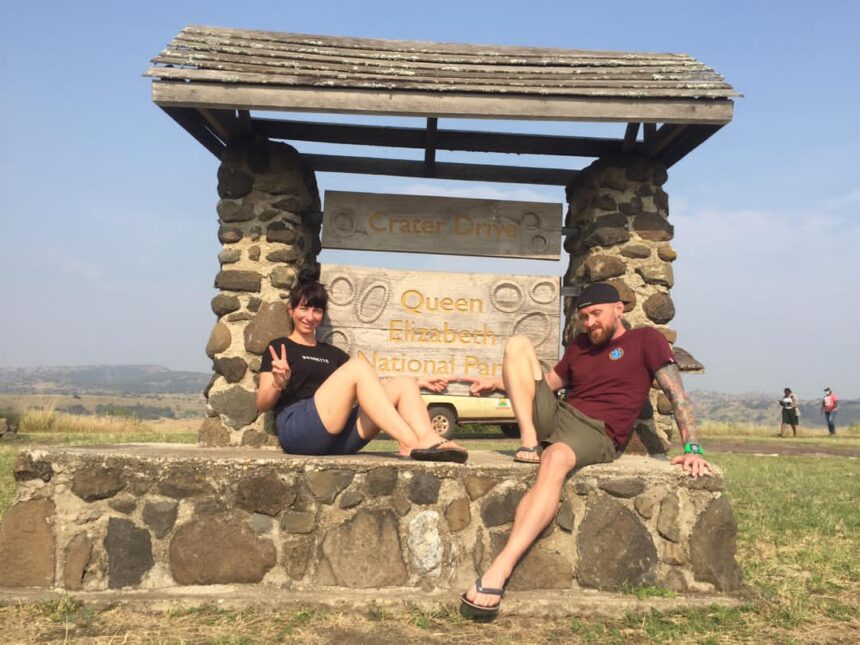“Classic” is how Ruberto summed up the view of the first Crater Lake that we met while on the Queen Elizabeth National park crater drive. The park is a popular destination in Uganda, not because it was named after the Queen of England, but because of what it has to offer. The park boasts an impressive variety of habitats that harbors wildlife from the tree-climbing lions of Ishasha, the Kazinga channel, mammals of Kasenyi plains, predators of Mweya peninsular, and seismic scenery.
For millions of years, the Rwenzori Mountains have witnessed the beauty of the park from the backdrop following the line of the Albertine Rift. The craters here are the most scenic park stretching for 27km but the crater drive is less done.
The explosion crater lakes from Kikorongo to Katwe shade the northern part of Queen Elizabeth National Park. The drive-in is on a ridge with a high point of 1350m ASL. The drive offers views of Lake George at the start of the climb, vegetation-filled craters, and others filled with water to form lakes.
The activity is overshadowed by the other activities that happen at the park but if you have been on it, you must recommend it as a must-do and seething while in Queen Elizabeth National Park. It gives an understanding of the geographical formation of the park’s landscapes and the impact of the volcanic activities that happened here leading to the formation of dozens of craters in the region. These extend to even the neighboring district of Fort Portal (Kasenda Craters).
At the start, as you drive to Kikorongo, the plains of Kasenyi below the starting point, are filled with wildlife but as you drive up on the ridge, you will see less wildlife. Just chirping birds, few monkeys, small groups of up to 3 loser buffaloes, some few elephants, and some flamingoes on the lakes, but the scenery alone is catching.
The craters are in the dormant vents that were a passage for magma, making them steep and deep that animals cannot make it down there except a few. Lake Nyamunuka is one of the easy to access by animals. The lake is high in calcium and Sulphur contents and injured/wounded animals come here and wallow in the water and mud to heal. It is renowned as a healing place or hospital for the animals. The name Nyamunuka is the local dialect for something that stinks and the lake gets the name because of the smell from it.
Animals are what most expect of the park, and they don’t prepare for these magnificent vistas. The area has different shades of green, patches of short acacia, grass, making it a place where each one will stop for a picture.
The craters vary in size and beauty but don’t exceed 2 miles across and 100m deep. A number of them are saltwater lakes and with high acidity and stinks of Sulphur. Lake Katwe is a famous saltwater lake here and has for decades been renowned for salt mining. The lake is surrounded by hundreds of salt pans that are dug by locals that engage in salt mining activity.
So, apart from the loads of animals that you could run in while at the park, a visit to Queen Elizabeth National park without the crater drive, I would deem if incomplete. We know you are always prepared for wildlife, but now you can prepare for these stunning vistas.

